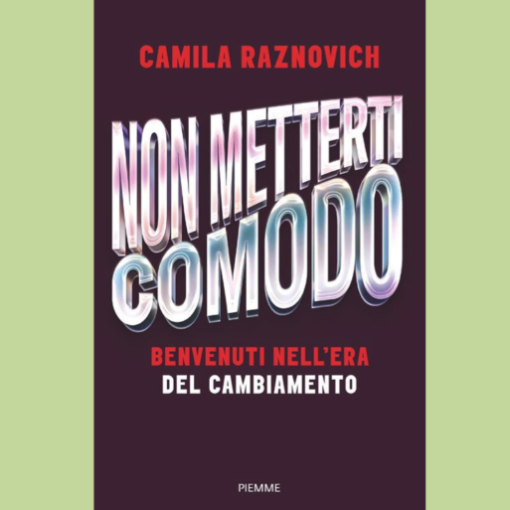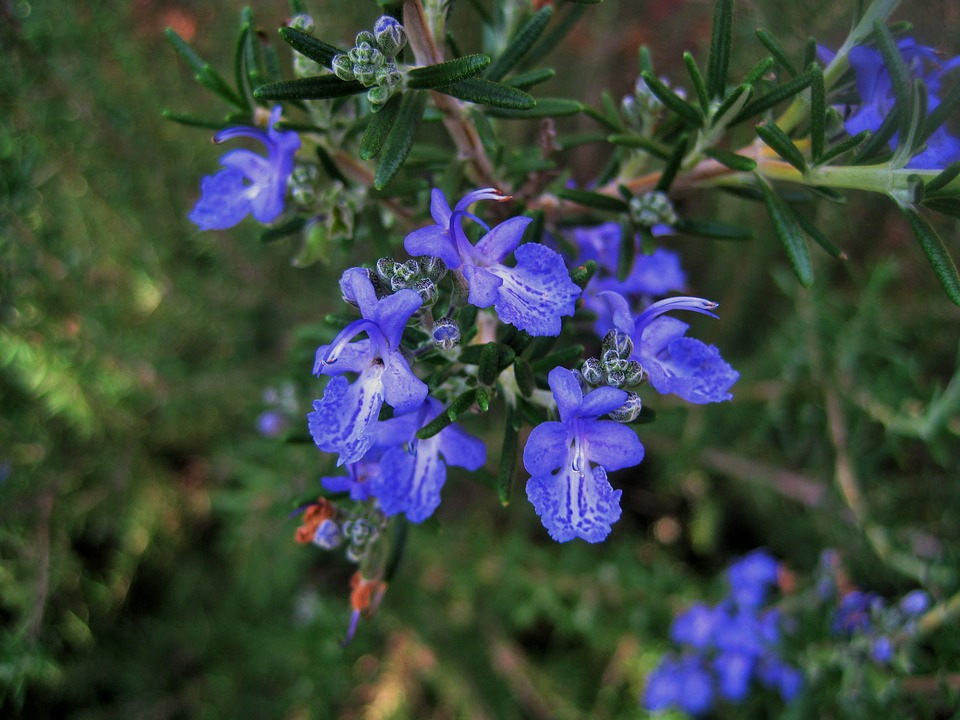
Autumn has begun, but the last warm days still give us, among the bushes of the Mediterranean scrub, the scent and the beautiful blue blooms of Rosemary.
The plant
Belonging to the Lamiaceae or Labiatae family, Rosemary (Rosmarinus officinalis) is an evergreen perennial shrub typical of garrigues, sparse woods facing the sea, stony and sunny cliffs of the maquis; loves dry and sunny environments. It has a bushy and creeping habit and, in rare cases, it can even reach two to three meters in height.
The very deep roots anchor tenaciously to the ground, even to the most inaccessible ones, helping to consolidate the slopes and the escarpments
The leaves, leathery and without petiole, are narrow and linear with the margin facing downwards and of a nice dark green shiny colour on the upper page; the lower page is whitish due to the presence of a thick hair, called tomentum, composed of branching hairs mixed with glandular hairs rich in essential oils, resinous substances and tannins. This structure prevents leaf dehydration, while essential oils, resins and tannins protect the leaf from burns that could be caused by strong sunlight. The strong aromaticity keeps away parasites and animals that could burn them.
Flowering is spectacular and usually takes place from April to August, but under special conditions, along the coast, on islands and in protected areas, it can last all year round with short breaks.
The flowers are small, light blue or violet, rarely white, as in the albiflorus variant found spontaneously in Sardinia; they are grouped in inflorescences of 4 – 16 at the axil of the upper leaves.
The flower, characteristic of the family, consists of a tubular bilobed calyx: the upper part is erect and then turned backwards, the lower part is very evident and trilobed, with an indented margin and darker dots. At the end of the flowering, the corollas fall, the flowery goblets persist on the branches which contain the fruit composed of 4 shiny achenes of brown color.
The perfume and the nectar of its flowers make it a melliferous plant very appreciated by bees, which from rosemary produce honey of particular value, light in colour, pleasantly scented and delicate.
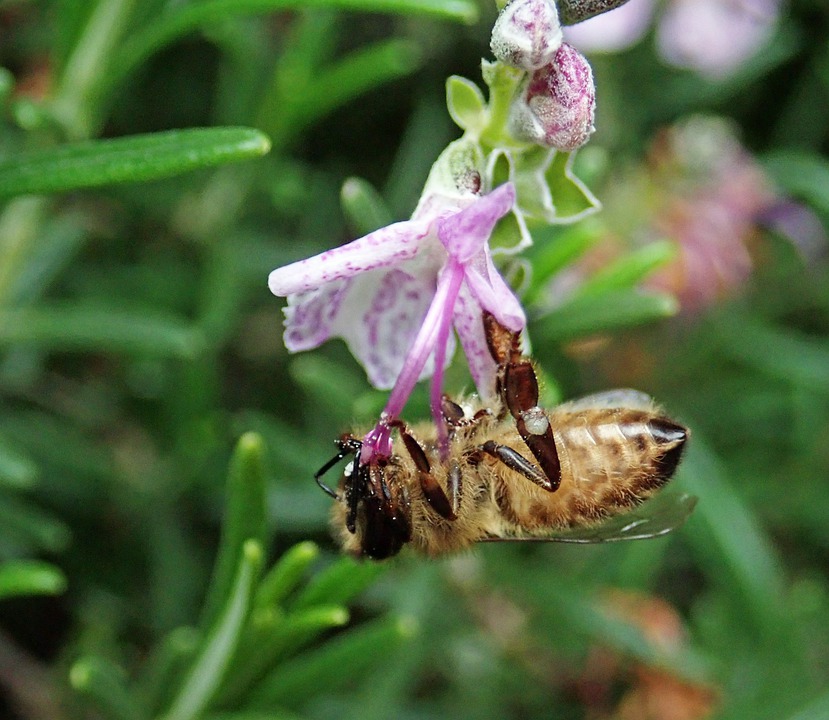
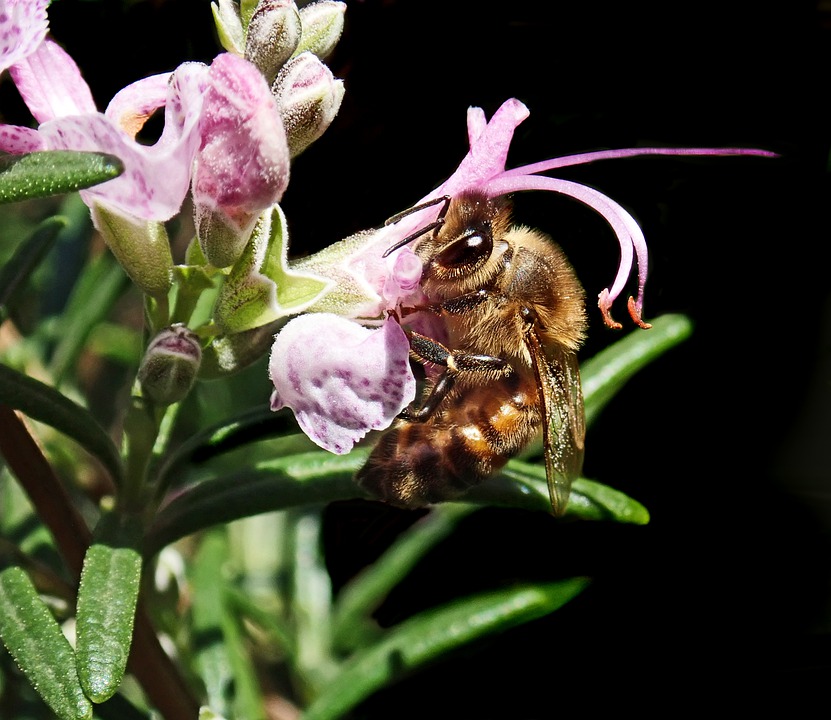
The Trunk, erect or lying down, sometimes twisted, is very branched. Characteristic is the flaking in longitudinal strips at the bottom of the bark.
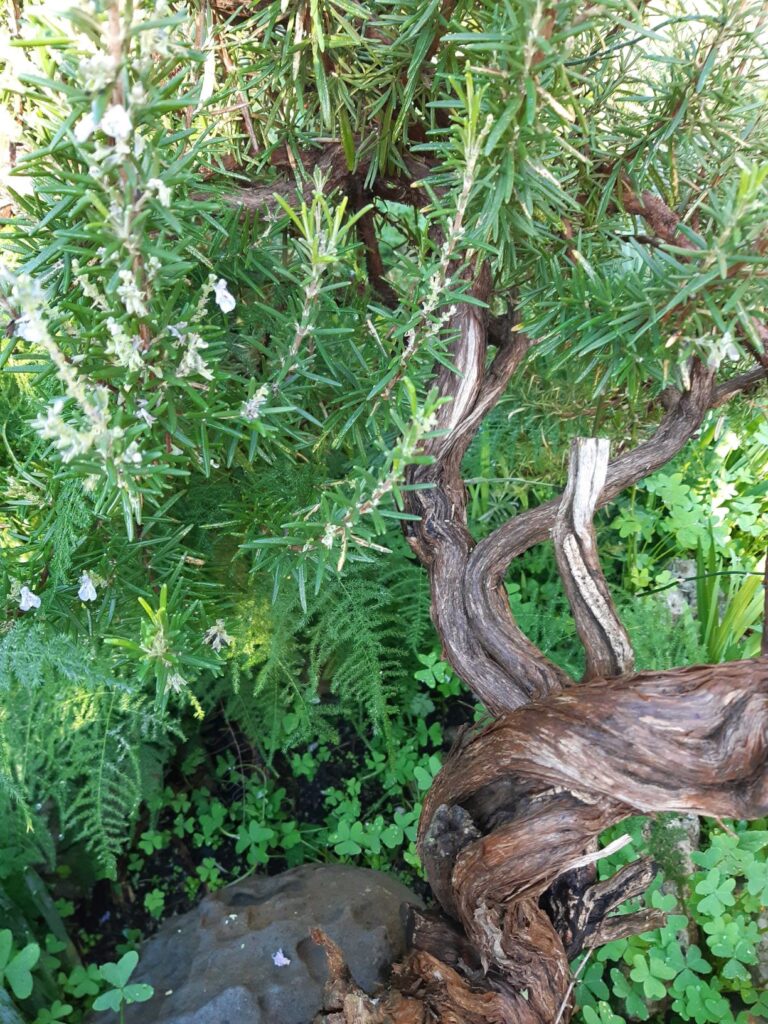
In the kitchen
It is an intensely aromatic plant and for this reason it has always been one of the essential aromas and flavours of Mediterranean cuisine. From a nutritional point of view, Rosemary is a panacea: it facilitates the production of bile (cholagogue), promotes digestion (stomachic), stimulates peristaltic (carminative) movements and tones the nervous system.
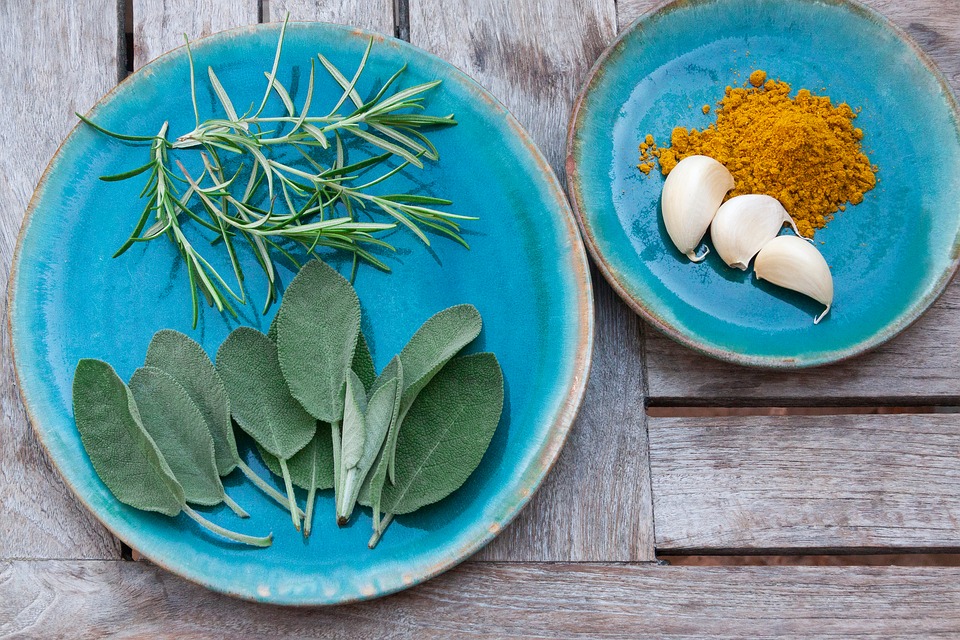
Words and … magic!
According to some authors the name means “sea dew” deriving from the Latin “ros” (dew) and “maris” (of the sea); for others it would mean “scented shrub”, making it come from the Greek “rhops” (shrub) and ” myrinos ”(fragrant). In each Italian region it is known by different names (see at the end of the article).
Known and always used for its aromatic and medicinal properties, Rosemary has become the protagonist of myths, legends and beliefs of European and Mediterranean popular culture.
In ancient Greece it was consecrated to Ares, the god of war: Rosemary branches were placed in the arms of the dead as a symbol of the immortality of the soul.
The ancient Egyptians used to leave branches of Rosemary in the tombs, while the Romans used to put them in the hands of the dead, so as to help them in the descent into the underworld. “If you want to earn the esteem of the dead, bring them wreaths of Rosemary and Myrtle”, suggested Orazio.
Among the Romans the plant was also dedicated to Venus and considered a strong aphrodisiac. They also adorned the statues of the Lares, protectors of the house and of the family with twigs of Rosemary. Confirming the sacred symbolism attributed to the plant, there are reports of Rosemary branches burned during sacrifices and religious ceremonies.
Ovid tells in the “Metamorphoses” that the princess Leucotoe, daughter of the king of Persia, was seduced by Apollo, stealthily entered her rooms, as the gods used to do at that time. His father was furious and blinded by anger, as a punishment he killed his daughter who had not been able to resist the god. But the rays of the Sun took pity on her, penetrated the tomb of the girl and, as soon as they touched her remains, they slowly turned into a plant with an intense perfume, with small green leaves and pale blue flowers: Rosemary.
Considered for this magical and sacred plant dedicated to the Sun, it is the plant of the summer solstice, still today it is used for the preparation of the “Acqua di S. Giovanni”, together with Iperico, Ruta and Lavanda.
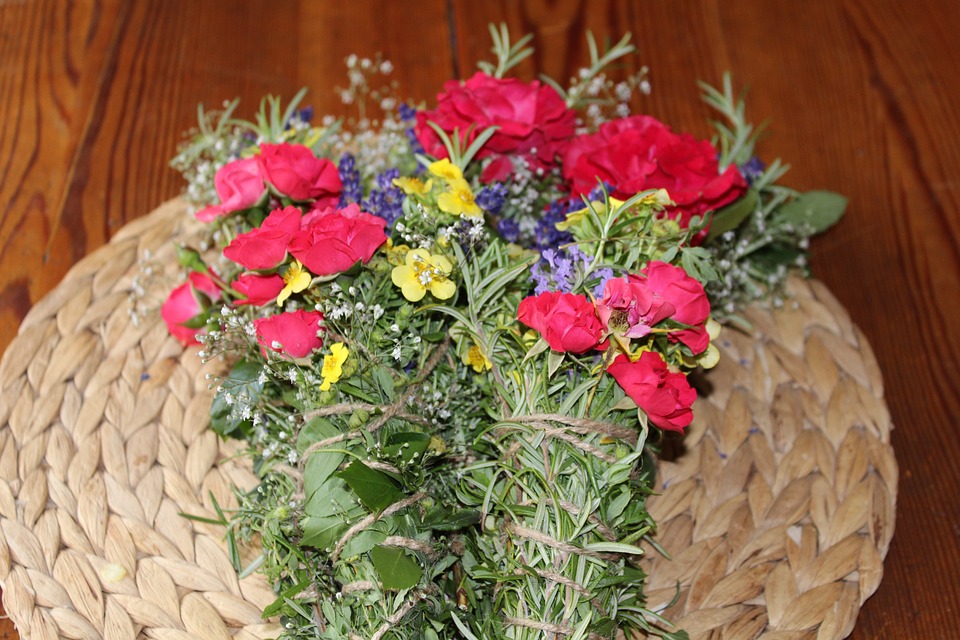
With the advent of Christianity, then, the plant took on great symbolic value. A legend tells that during the flight to Egypt, a large Rosemary plant offered shelter and hiding to the Child Jesus and to the Madonna, concealing them in the eyes of Herod’s soldiers. It is also said that the originally white flowers turned blue when the Madonna dropped her coat on one of these plants.
The magic of the Rosemary found much credit in the Middle Ages and in the following centuries Charlemagne published an edict in 812 with which peasants were required to cultivate Rosemary plants, since it was believed that its perfume contained the Soul of the Earth and, therefore, since then the plant was present in the medieval gardens and in the Italian-style gardens of Renaissance.
Popular medicine attributed to the Rosemary the power to strengthen memory, in fact, scholars used to gird their heads with a Rosemary crown during the study or to keep a twig on the table.
Thus Ophelia in the IV Act of Shakespearean Hamlet: “Here is the Rosemary that strengthens the memories; love, please, remember me; and here is the flower of thought ”.
It is said that even Napoleon used large quantities of Rosemary cologne to concentrate when preparing battle plans.
With rosemary wood, talismans were built in the form of small spoons to protect themselves from poisoning and small combs to protect themselves from baldness.
Uses and beliefs over the centuries
Herbal properties are well represented in what was considered for centuries an elixir of youth and a miraculous medicine, “The Water of the Queen of Hungary”, made by distilling two parts of Rosemary and three alcohol flowers.
Queen Isabella of Hungary, who lived in the 1300s, advised as follows: “Take a drama of this potion once a week, wash your face with it every morning and rub your sick limbs with it. This remedy renews its strength, lifts the spirit, cleans the marrow, gives new vigor, restores sight and preserves it for a long time; it is excellent for the stomach and the chest ”.
In the seventeenth century, Madame de Sevigné, an exponent of the Parisian aristocracy of the time, wrote as follows: “It is divine; I get intoxicated of it every day: I find it good against sadness. I am crazy about it; it is the relief of all sorrows “. It also seems that even Luigi XIV, thanks to this water, recovered from rheumatism in his arm and shoulder and used it to heal gout.
Even today we produce a “Rosemary aromatic flower water” or “Queen of Hungary water” used as a “beauty tonic for facial skin”.
Giuseppe Donzelli (physician, chemist, Neapolitan philosopher who lived in 1600) writes in his “Pharmaceutical Theater”: “Take one pounf of rosmarino flowers, three pounds of sugar. Cook the sugar in the manus christi way and let it cool and then mix the whole flowers and cook them a little because in doing so you can keep their native color. It comforts the cerebro humido, benefits the heart and corroborates the nervous limbs “.
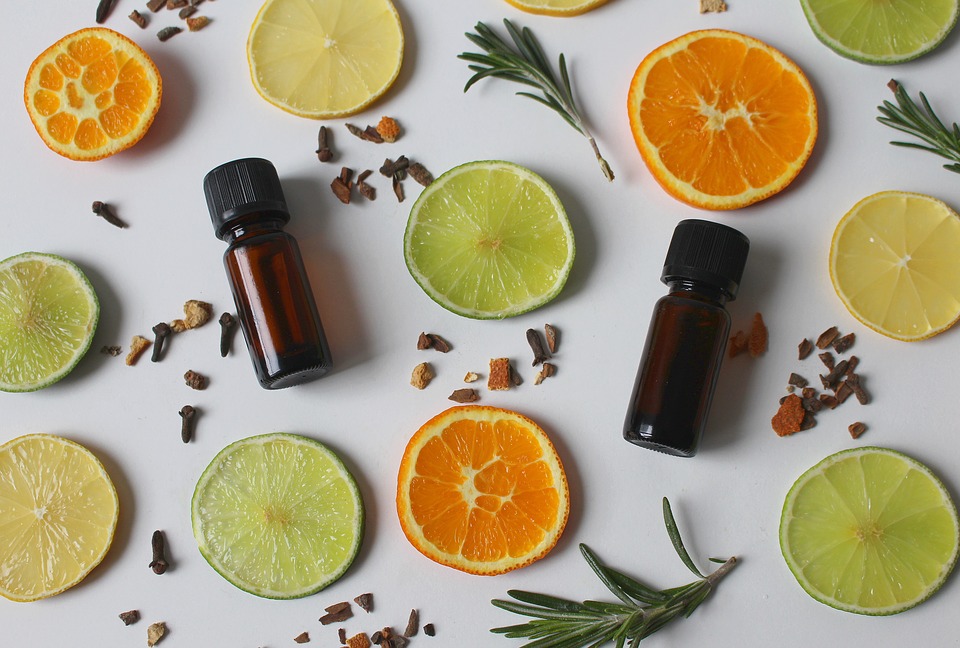
Today Rosemary is widely used in the cosmetic and pharmaceutical industry for the preparation of shampoos, astringent lotions, toning ointments; in perfumery it is used for the preparation of colonies, while in aromatherapy the properties are exploited as a remedy for depression, to relieve migraine and improve memory.
The plant is much loved by the English; in England it is believed that a small branch, carried to the buttonhole, brings good luck; in past centuries, branches of rosemary immersed in perfumed water were woven into wedding wreaths.
In Ireland, the island of goblins, it is called “maròs”. It is the custom for Irish girls of marriageable age to put a plate full of flour under a Rosemary bush on the night of the summer solstice. The next morning they can read in the flour the initial of the name of the future groom, traced by some goblin!
REGIONAL NAMES
Abruzzo: Trisomarino.
Calabria: Ròsa marìna.
Campania: Rosamarina.
Liguria: Römanin, Rosumarin.
Lombardia: Rusmarìn, Rosmarein, Osmari.
Marche: Trosomarì.
Emilia: Usmaren, Rosmaren.
Piedmont: Rosmarinu, rusmarin.
Puglia: Rosmarin.
Sardinia: Romasinu, Zippiri Arromaniu, Ozzipiri, Romaninu.
Sicily: Rosmarinu.
Tuscany: Ramelino, Ramerino, Tramelino, Tramerino.
Umbria: Stammerino.
Veneto: Rosmarìn, Osmarìn, Sgormarin, Sgulmarin.
Credits
Author: Maria Beatrice Lupi. Naturalist,an expert in training, planning for sustainable development, participatory methodologies and European planning. Currently, she is involved in dissemination and education for sustainability.
Translation by Maria Antonietta Sessa


